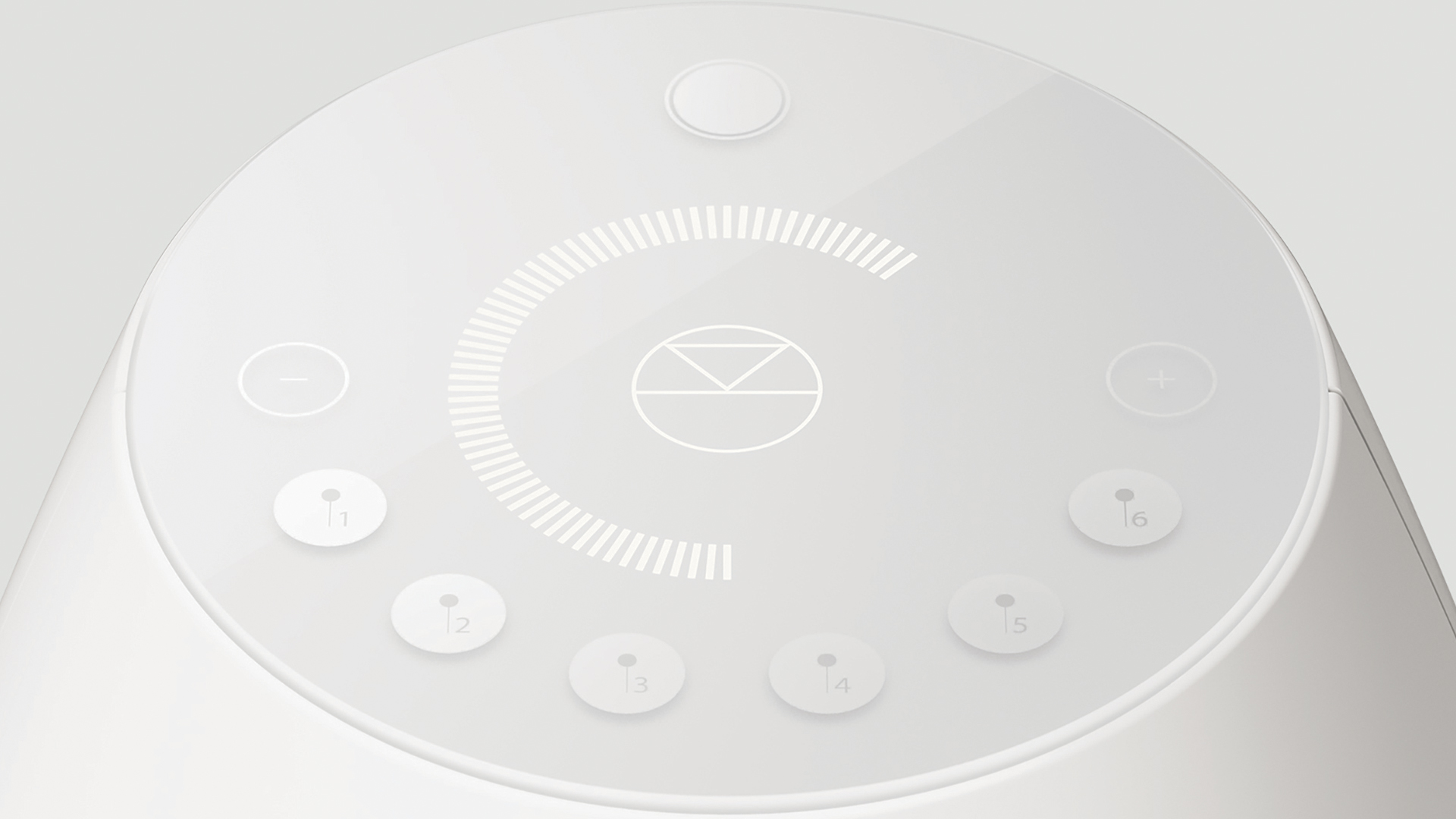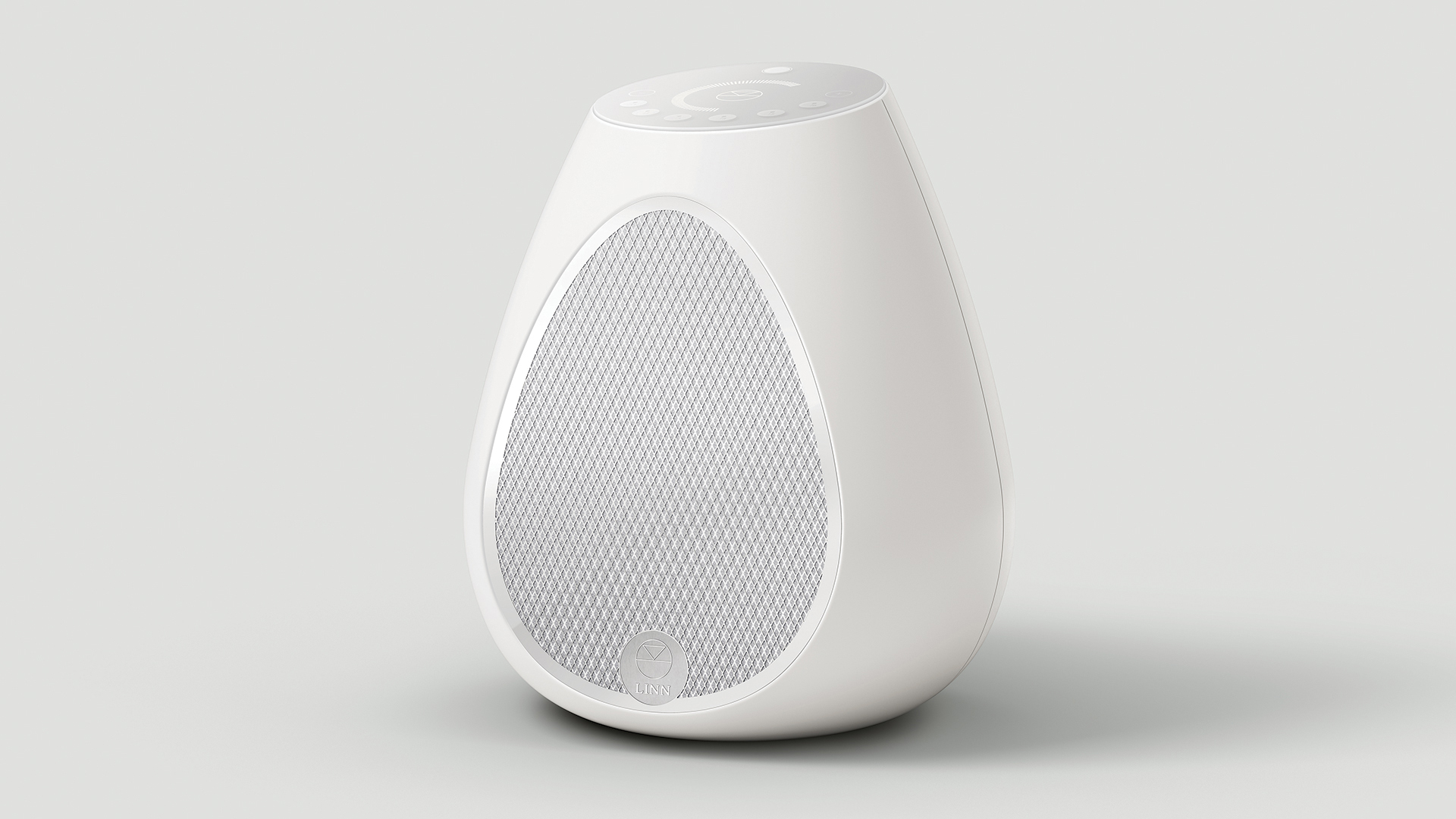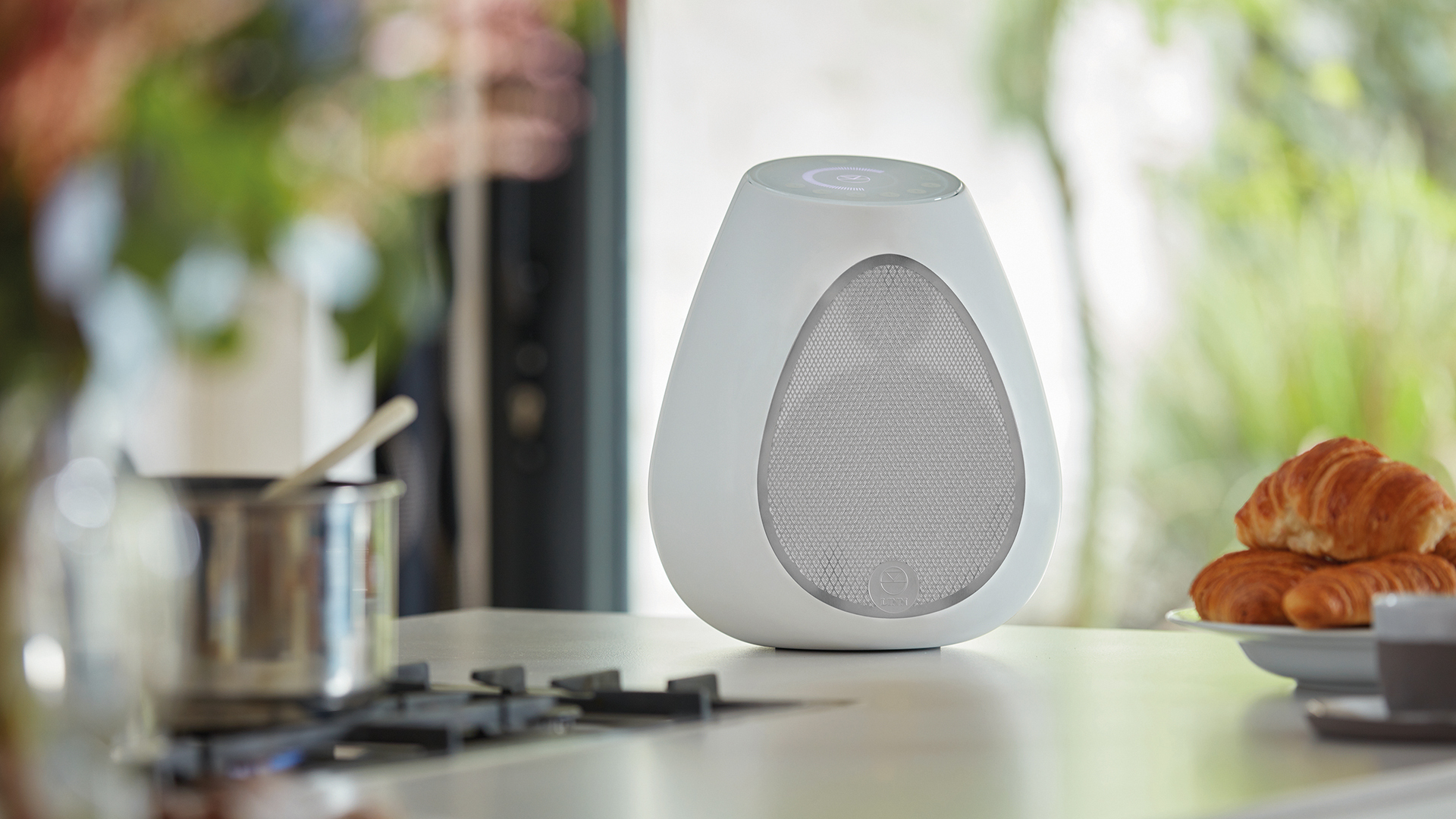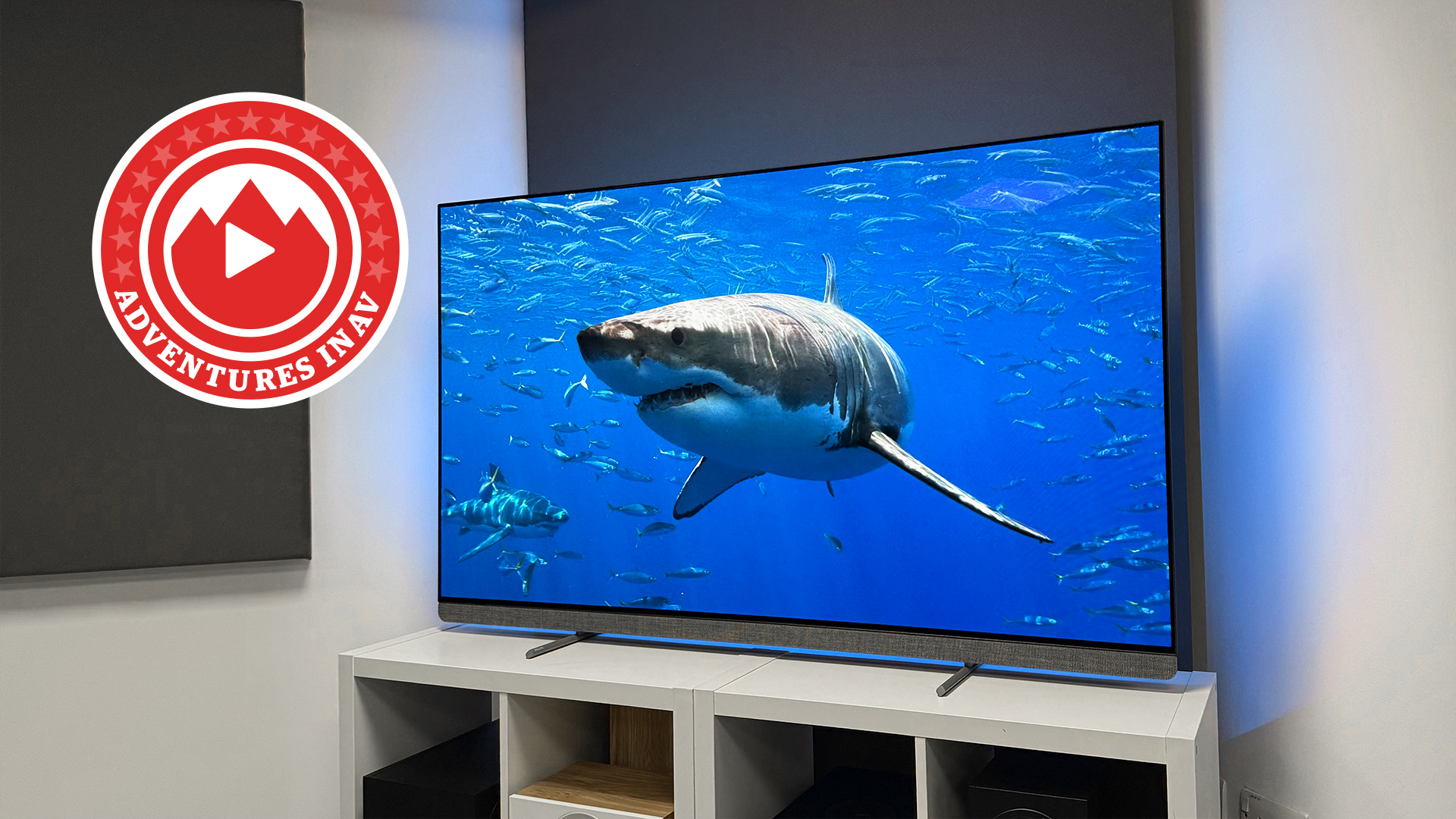What Hi-Fi? Verdict
The most expensive wireless speaker we’ve tested also happens to be the best
Pros
- +
Wonderfully articulate
- +
Luxury design
- +
HDMI ARC for TV connection
Cons
- -
No analogue inputs
- -
No Tidal Masters support
Why you can trust What Hi-Fi?
Linn was one of the first hi-fi brands to launch a music streamer back in 2007, so it’s surprising the Glasgow-based company has waited this long to launch its first wireless speaker. But here it is, and it’s called the Linn Series 3.
While a newcomer in the market often faces an uphill battle to conquer established rivals (in the case of premium wireless speakers, that’d be Naim) Linn's entrant arrives exuding a cool confidence thanks to the company's decade-plus experience producing high-end network streamers.
But there’s an elephant in the room – the Series 3 is the most expensive wireless speaker we have tested. It’s over three times the price of the Bowers & Wilkins Formation Wedge, twice that of the Naim Mu-so 2, and still several hundreds of pounds more than Devialet’s Gold Phantom.
Can any standalone wireless speaker, even one with Linn’s level of streaming expertise, justify such a price?
Features

The Series 3 may mark a new venture for Linn, but anyone acquainted with one of the brand’s streaming products doesn’t have to go far to find familiarity in the design.
The speaker leverages Linn’s well established streaming platform, which offers access to networked servers, as well as music services Tidal and Qobuz, via Linn’s Kazoo app.

Resolution 24-bit/192kHz
Streaming services Tidal, Qobuz, Spotify Connect
HDMI ARC Yes
Connectivity Ethernet, wi-fi
Bluetooth Yes
AirPlay Yes
You can add Spotify Connect to that list, as well as AirPlay, Bluetooth and Roon support, but while Qobuz’s hi-res catalogue is fully accessible on the Series 3, subscribers of Tidal’s top tier won’t be able to play the service’s hi-res Masters tracks. Linn has shunned the Masters Quality Authenticated (MQA) technology that these tracks are based on and so none of its hardware supports it.
The latest hi-fi, home cinema and tech news, reviews, buying advice and deals, direct to your inbox.
Multi-room is an option for those with Linn Series 3 speakers in different rooms, while voice control is available here when the speaker is wirelessly paired with an Alexa-compatible device on the same network.
There’s also an HDMI ARC socket, which allows you to connect a TV to the Series 3 too, if you could use a 30cm-tall wireless speaker in your telly set-up. If you're feeling particularly flush, you could buy a stereo pair and place one either side of your flatscreen.
Speaking of which, there's an Exakt port that allows serious spenders to wire a chief Series 3 speaker (Series3-301) to a slightly modified, £2450 ‘slave’ version (Series3-302) to form a £5400 stereo pair, but there are no analogue or further digital inputs to speak of, so you won’t be able to connect a CD player or turntable.
Build

Continuing the aesthetic introduced in the company’s Selekt DSM, the Series 3’s has a glass, touch-control top plate, lit by around 100 LEDs to indicate volume and also featuring six numbered presets offering shortcut access to favourite content, which is easily assignable in the app. You can ‘pin’ inputs, radio stations and content from streaming services, but the service wasn’t extended to our media server.
To minimise the amount of touch controls on the panel, those presets also activate functions when pressed in different sequences: pressing presets three and four simultaneously initiates Bluetooth pairing, while two and five puts the speaker in wi-fi mode.
Once a master and slave are connected via the included Exakt transport cable (Linn’s method of transmitting audio data, power triggers and a master timing control to ensure that the audio from all channels are in perfect sync), press-holding presets one and six confirms the pairing.
It’s a neat and well integrated control system, but we wish we could slide our finger around the circular ring of LEDs to adjust volume more instinctively, rather than have to tap the volume up and down touch buttons either side.
That top plate is complemented by a ceramic-like stone chassis, which has been shaped like the top of a wine glass, but also resembles an oversized egg or rain drop. On the front is a changeable grille, finished in either gold (a Harrods exclusive) or chrome, that hides a silk dome tweeter and long-throw driver. It’s no less gorgeous than you’d expect from Linn – elegant, polished and as close to looking its price as possible for a wireless speaker just shy of £3k.
While it’s hard to believe a standalone wireless speaker you can tuck under your arm could look anywhere near such an asking price, it’s even harder to believe that the performance could justify it.
Sound

But what helps makes that happen is Linn’s proprietary Exakt technology. Linn Exakt aims to reduce phase errors by intentionally delaying higher frequencies so they arrive at your ear at the same time as lower frequencies. It also keeps the music signal’s data in the digital domain for as long as possible to avoid any degradation caused by signal processing.
We’ve heard Exakt do its thing in many a Linn product before, and it again contributes to an absorbing performance. What’s immediately striking is the stunning midrange clarity. Play Mac Miller’s What’s The Use? (over Tidal) and his rap comes through with the clarity and frankness that perfectly captures the delivery’s candidness. The Series 3 is a sharp performer, and we don’t mean tonally: it’s so punctual that his words stop and start precisely.
The Linn’s low-end agility ensures the accompanying bassline bobs along with bounce and interest. Where there’s quality there’s quantity, too. We play Billie Eilish’s Bad Guy, and the Series 3 thumps it into the room – just about able to communicate the bass’s seismic quality. We almost feel for the modestly sized woofer having to plummet to such depths, but it appears to dig down effortlessly.
Whatever we throw at it, the Series 3 appears at ease – partly down to its balance and clarity but also the seamless integration of its drivers. Its insight sets it apart from its more affordable competitors, too. With Eluvium’s Prelude For Time Feelers, it reveals itself as a stickler for subtlety, affording each piano key a measured burden and confidently meandering through the subtle dynamic shifts in the compelling sequence. While lesser hi-fi can overlook discrepancies in production, the Linn conveys the warmer cut of Michael Kiwanuka’s Piano Joint (This Kind Of Love).
We run a lead between the Series 3 and a slave variant, and discover that it is even more impressive in a stereo configuration. The presentation’s tonality, transparency and rhythmic knack remains, but there’s a scale, bass volume and of course a stereo image to be gained from adding the second.

We play Anthony And The Johnsons’ Aeon and can appreciate the Linn’s value as a wholesome hi-fi system. Anohni’s distinctive quiver comes right down the middle of the two Series 3s, the piano familiarly absorbing and the guitar arpeggio delivered with even more dynamic scale.
For the same outlay, you could get a decent system of hi-fi separates, which would topple the Linn in some areas. But for the convenience of having an entire streaming system in two compact speaker boxes, you will still get a hi-fi-mature, best-in-class sound that’s surprisingly room-filling.
We should also mention Linn’s Space Optimization, which aims to optimise performance according to the shape of your room and where the speaker is placed within it.
By interpreting your room information against Linn’s database of speaker behaviour, the technology aims to make them sound as though they’re in the ideal position. It’s impressive stuff, though we preferred the tonal balance and overall performance of the Series 3 in our test room with it turned off.
Verdict
At nearly £3k, we can hardly describe the Series 3 as a bargain, but we are left convinced of its appeal. It proves worthy of even this huge price tag, and those who can afford it won’t be disappointed at its mastery.
The Series 3’s omission of Tidal Masters is disappointing, and further connectivity to allow owners to add more non-streaming sources would be top of our wish list – but for a premium wireless speaker it isn’t far off. It may not look like it, but make no mistake, this is proper hi-fi.
SCORES
- Sound 5
- Features 4
- Build 4
MORE:
Read our Devialet Gold Phantom review
What Hi-Fi?, founded in 1976, is the world's leading independent guide to buying and owning hi-fi and home entertainment products. Our comprehensive tests help you buy the very best for your money, with our advice sections giving you step-by-step information on how to get even more from your music and movies. Everything is tested by our dedicated team of in-house reviewers in our custom-built test rooms in London, Reading and Bath. Our coveted five-star rating and Awards are recognised all over the world as the ultimate seal of approval, so you can buy with absolute confidence.

